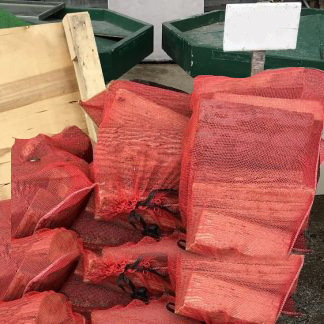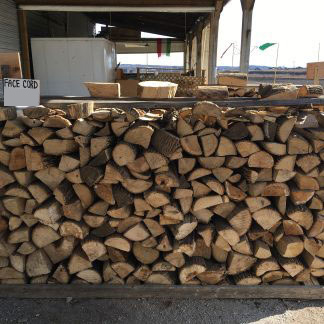Shop

Bag of Wood $15.00 + Tax
Add to enquiry
1/4 Face Cord $60.00 + Tax
Add to enquiry
1/2 Face Cord $99.00 + Tax
Add to enquiry
1 Face Cord $190.00 + Tax (42.6667 cu. ft)
Add to enquiry
1 Bush Cord $560.00 + Tax
Add to enquiryBASIC DELIVERY IS $50
DEPENDING ON LOCATION DELIVERY MAY BE EXTRA
Inquire about our delivery services. Call: +1 647-237-5537
Regular info about wood
Firewood is any wooden material that is gathered and used for fuel. Generally, firewood is not highly processed and is in some sort of recognizable log or branch form, compared to other forms of wood fuel like pellets or chips. Firewood can be seasoned (dry) or unseasoned (fresh/wet). It can be classed as hardwood or softwood
Storage
There are many ways to store firewood. These range from simple piles to free-standing stacks, to specialized structures. Usually the goal of storing wood is to keep water away from it and to continue the drying process.
Stacks: The simplest stack is where logs are placed next to and on top of each other, forming a line the width of the logs. The height of the stack can vary, generally depending upon how the ends are constructed. Without constructing ends, the length of the log and length of the pile help determine the height of a free-standing stack.
There is debate about whether wood will dry more quickly when covered. There is a trade-off between the surface of the wood getting wet vs. allowing as much wind and sun as possible to access the stack. A cover can be almost any material that sheds water – a large piece of plywood, sheet metal, terracotta tiles, or an oiled canvas cloth, even cheap plastic sheeting may also be used. Wood will not dry when completely covered. Ideally pallets or scrap wood should be used to raise the wood from the ground, reducing rot and increasing air flow.
There are many ways to create the ends of a stack. In some areas, a crib end is created by alternating pairs of logs to help stabilize the end. A stake or pole placed in the ground is another way to end the pile. A series of stacked logs at the end, each with a cord tied to it and the free end of the cord wrapped to log in the middle of the pile, is another way.
Under a roof: Under a roof, there are no concerns about the wood being subjected to rain, snow or run-off, but ventilation needs to be provided if the wood is stored green so that moisture released from the wood does not recondense inside. The methods for stacking depend on the structure and layout desired. Whether split, or in 'rounds' (flush-cut and unsplit segments of logs), the wood should be stacked lengthwise, which is the most stable and practical method. Again though, if the wood needs further seasoning there should be adequate air flow through the stack.
Storing outdoors: Firewood should be stacked with the bark facing upwards. This allows the water to drain off, and standing frost, ice, or snow to be kept from the wood.
Round stacks can be made many ways. Some are piles of wood with a stacked circular wall around them. Others like the American Holz Hausen are more complicated.
A Holz hausen, or "wood house", is a circular method of stacking wood; proponents say it speeds up drying on a relatively small footprint. A traditional holz hausen has a 10-foot diameter, stands 10 feet high, and holds about 6 cords of wood. The walls are made of pieces arranged radially, and tilted slightly inward for stability. The inside pieces are stacked on end to form a chimney for air flow. The top pieces are tilted slightly outward to shed rain and are placed bark side up.
Measurement
Usually firewood is sold by volume. While a specific volume term may be used, there can be a wide variation in what this means and what the measure can produce as a fuel.
For example, a cord which is made from 4-foot (1.22 m) logs, will not be a cord when it is cut into 1 foot logs and these split so each piece will fit through a 3-inch (7.6 cm) circle. A measure of green unseasoned wood with 65% moisture contains less usable energy than when it has been dried to 20%. Regardless of the term, firewood measurement is best thought of as an estimate.
In the United States and Canada, firewood is usually sold by the full cord, face cord or bag.
- A full cord or bush cord has a volume of 128 cubic feet (3.6 m3), including wood, bark, and air space in a neatly stacked pile.The actual wood volume of a cord may be in the range of 80 to 100 cubic feet (2.3 to 2.8 m3) as stacked wood takes up more space than a piece of solid wood. The most common firewood piece length is 12- 16 inches
- A face cord is one third of a full or bush cord stack of wood that is 4 by 8 ft by 16 in.
- OR A face cord is one fourth of a full or bush cord stack of wood that is 4 by 8 ft by 12 in.